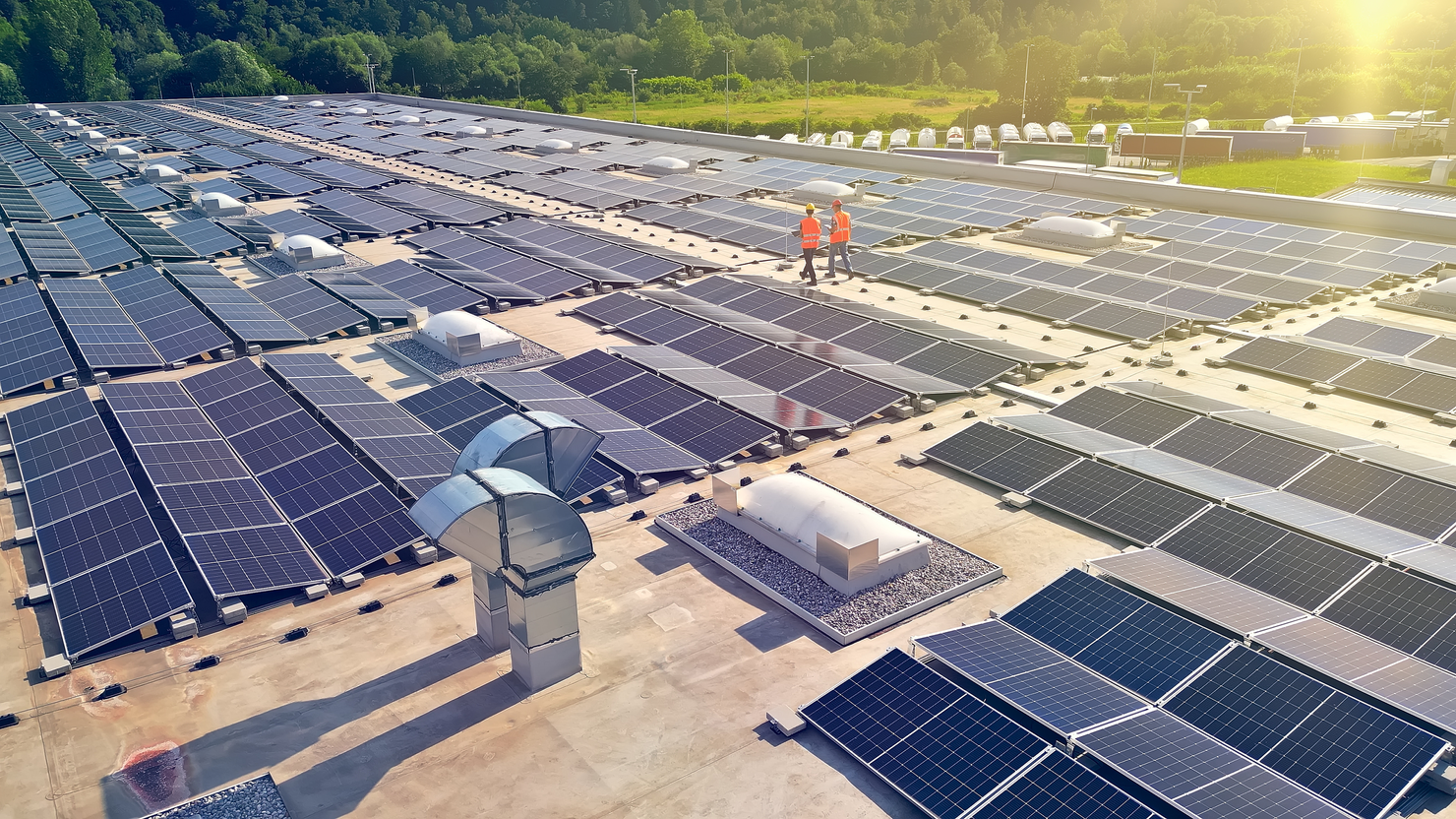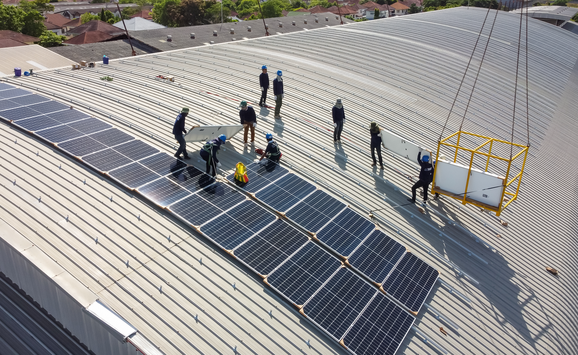The proposed changes to the Greenhouse Gas Protocol guidance could decrease emissions, but the added complexity could also drive companies away from participating in the voluntary reporting program.
Updates to the Greenhouse Gas Protocol's Accounting Standards
The Greenhouse Gas Protocol, an organization that determines the methodology by which companies voluntarily report their greenhouse gas emissions, has proposed changes to its greenhouse gas accounting standards. These blog posts reflect on the revisions and what they could mean for companies, greenhouse gas emissions, and clean energy investments.
The Greenhouse Gas Protocol (GHGP) recently proposed revisions to its guidance for corporate greenhouse gas emissions accounting, opening a 60-day public comment period. The proposed revisions apply to greenhouse gas emissions associated with companies’ electricity consumption, otherwise known as “Scope 2” emissions. The most important change is the incorporation of two new requirements into what the GHGP calls the market-based method of accounting: “hourly matching” and “deliverability.”
These changes are akin to requirements in the Biden administration’s guidance for the 45V hydrogen production tax credit. We can draw on the independent analyses done during that time to conclude that these changes to the GHGP, if all participating corporations were to comply, would likely lead to lower emissions, but that the mechanism driving those reductions isn’t what one might first expect. As I will describe, hourly matching and deliverability constrain the supply of energy attribute certificates (EACs), increasing the price of those certificates and, consequently, the amount of money going to clean generators. This increase in revenues for clean generators leads to more clean energy and lower emissions.
These analyses of the hydrogen production tax credit were done in the context of a regulatory policy. In contrast, corporations’ use of GHGP emissions accounting is entirely voluntary. If EAC prices rise substantially, corporations may choose to curtail their EAC purchases, limiting the impact on clean energy deployment and emissions. Moreover, the GHGP’s suggested changes also increase the complexity of complying with the guidance, which perhaps could even drive some companies away from voluntary emissions accounting entirely.
This is the first in a series of blog posts describing the GHGP’s proposed guidance changes, what these changes mean, and potential challenges with implementation.
The Greenhouse Gas Protocol and Corporate Accounting
The GHGP, a joint effort between World Resources Institute and the World Business Council for Sustainable Development, establishes standards and guidelines for carbon accounting in many contexts. The current revision is about the corporate standard, which attributes emissions to corporations (rather than, say, products).
Corporate inventories, which refer to the collection of greenhouse gases reported by a corporation, are divided into three “scopes.” Scope 1 comprises the emissions that directly occur at a facility owned by the corporation, such as a factory. Scope 2 comprises the upstream emissions associated with the consumption of electricity and heat by the corporation. Finally, Scope 3 comprises a panoply of upstream and downstream emissions ranging from the emissions associated with constructing facilities to those created by the use of a corporation’s products. The revision considered here is about Scope 2 emissions.

The GHGP’s current guidance offers corporations two ways to account for Scope 2 emissions: the location-based method and the market-based method. Under the location-based method, a corporation’s Scope 2 emissions are calculated using an emissions factor related to the emissions of the grid in the region where the electricity consumption occurred. As corporations have little influence over the emissions factor in the regions in which they operate, location-based accounting does not lead to much opportunity for a corporation to be able to reduce its Scope 2 emissions.
In the market-based method, each unit of clean electricity (i.e., electricity produced without direct greenhouse gas emissions, such as wind and solar) has an associated EAC. The EAC is intended to represent the “attribute” of clean energy and can be transferred from the electricity generator to a corporation separate from the purchase and sale of that clean electricity. Once in possession of an EAC, a corporation can “retire” the EAC and claim that it is consuming clean electricity when calculating its Scope 2 emissions. As I’ve discussed before, this is a useful fiction but does not represent the actual consumption of clean energy.
What Changes Are Being Proposed?
The GHGP is requesting comments on revisions to both the location-based and market-based methods. I will discuss only the market-based method in this blog post. In the GHGP’s current version of its market-based method, a company can retire an EAC at any time during the year in which the EAC was created. The new proposal makes two changes to this practice. First, the revision adds the requirement that the EAC be used only to represent the consumption of clean power in the same hour in which the EAC was created. The GHGP (and others) call this “hourly matching.” Second, the proposal requires that the EAC must be created and used in the same region for a company to claim the consumption of clean electricity. The GHGP calls this latter requirement “deliverability,” which I consider a misnomer due to many of the issues I discuss here.
These new requirements would add considerable complexity to GHGP reporting. To address this complexity, the guidance proposes an exemption from the hourly matching requirement for small- and medium-sized companies and/or companies that consume electricity below a not-yet-specified threshold. The GHGP would also phase in its updated guidance over time. In addition, for companies that have trouble determining their hourly electricity consumption, the GHGP proposes allowing the use of standard load profiles. There is no proposed exemption from the deliverability requirement. As I will discuss in subsequent blog posts, these proposed changes also could make complying with long-term contracts and engaging with spot markets more challenging. Especially in today’s political environment, companies could choose to drop emissions accounting entirely in the face of this added complexity.
What Effects Do We Expect These Changes to Have?
There are several similarities between the GHGP’s proposed updates and the final requirements for the 45V hydrogen production tax credit. When 45V was introduced in the Inflation Reduction Act, the Biden administration had to decide how to calculate the life-cycle emissions for hydrogen production. After an intense lobbying campaign for a variety of options, the Biden administration embraced what it called the “three pillars”: hourly matching, deliverability, and incrementality. Of the three, the only pillar that is not a requirement in the GHGP revision is incrementality, which would require corporations to purchase EACs from relatively new generators.
I wrote several analyses (evaluating emissions and costs, comparing hourly and annual matching, incorporating the demand for hydrogen, and considering new clean electricity) which examine papers that modeled the impacts of the three pillars. What I learned is that the three pillars, more likely than not, can lead to lower overall emissions from electricity generation, but the reason has little to do with the operation of the grid. Instead, the largest effect on emissions arises from how either 45V or the GHGP update affects the construction of new clean generators. In other words, it’s much more important whether a clean generator (as opposed to a natural gas plant) is built in response to new load on the grid, than whether that load is either proximate to (i.e., deliverability) or is temporally aligned with (i.e., hourly matching) clean generation.

The mechanism by which more clean generation is built is money. If the EACs have a high enough price, they can be an additional revenue source for the clean generator, making more clean energy projects profitable. The price of an EAC is determined by certificate supply and demand from corporations. Under the GHGP’s proposed revisions, there would be a different type of EAC for each individual hour and region, leading to thousands of types of EACs, rather than one type of EAC over the course of the year. This proliferation of EAC product types creates more opportunities for periods during which the demand for EACs outweighs the supply, driving the price up. The purchase and sale of these expensive EACs can drive new clean generation, leading to emissions reductions.
Proponents of these proposed changes to the GHGP also argue that, by increasing EAC prices during the hours when wind and solar have the lowest output, the new guidance will reward “clean firm” generation, i.e., clean generation like geothermal and nuclear that is not intermittent. It is not clear to me, however, whether this price signal is sufficient to drive investment in these more expensive technologies.
In the 45V modeling I examined, the EAC price is zero in most hours, and the price in other hours is significantly higher than is seen in the current system. Since companies purchase EACs voluntarily, these higher prices raise the question of how much corporations are willing to pay for an individual EAC. If a corporation decides to purchase only low-cost EACs, it could still claim upwards of 80 percent clean energy, possibly more, all while having essentially zero impact on emissions because only minimal money is transferred to clean generators.
What’s Next?
The changes proposed by the GHGP have the potential to reduce emissions from the power sector by increasing the deployment of clean energy. The proposed changes do so by taking the supply of EACs and subdividing it into thousands of different subtypes, corresponding to different regions and different hours of the year. With these thousands of subtypes, there is more opportunity for periods when the demand for EACs outstrips the supply. This increased demand will drive up prices, which could lead to more revenue for clean generators, but that effect will be limited by how much corporations are willing to pay absent any regulatory mandates.
These changes will also add complexity to the guidance. While some provisions in the proposed guidance facilitate compliance, particularly for smaller entities, there is an unavoidable increase in complexity in having to deal with EACs across all hours. Further, corporations, particularly those with energy consumption in multiple regions, will find it hard—if not impossible—to comply by using a single long-term contract for clean electricity. Instead, they will likely be forced to engage with a complex spot market for EACs. Many corporations have indicated that they may instead forgo using the GHGP guidance rather than navigate this complexity. Of course, this is all part of intense ongoing lobbying around the GHGP’s proposed changes, and it’s difficult to predict what would happen in practice.
In the next two blog posts, I will dig a bit deeper into some aspects of this complexity. Given the importance of long-term contracts in driving investment in clean electricity, I will discuss how long-term contracts could work under the proposed guidance and what effect complexity might have on clean electricity generation. The final blog post will be devoted to how spot markets for EACs might operate and the implications for the price signal for clean energy. I have more questions than answers, but I hope that these questions can inform the work of the GHGP going forward as it seeks to finalize the revised Scope 2 guidance in 2027 (or beyond).






